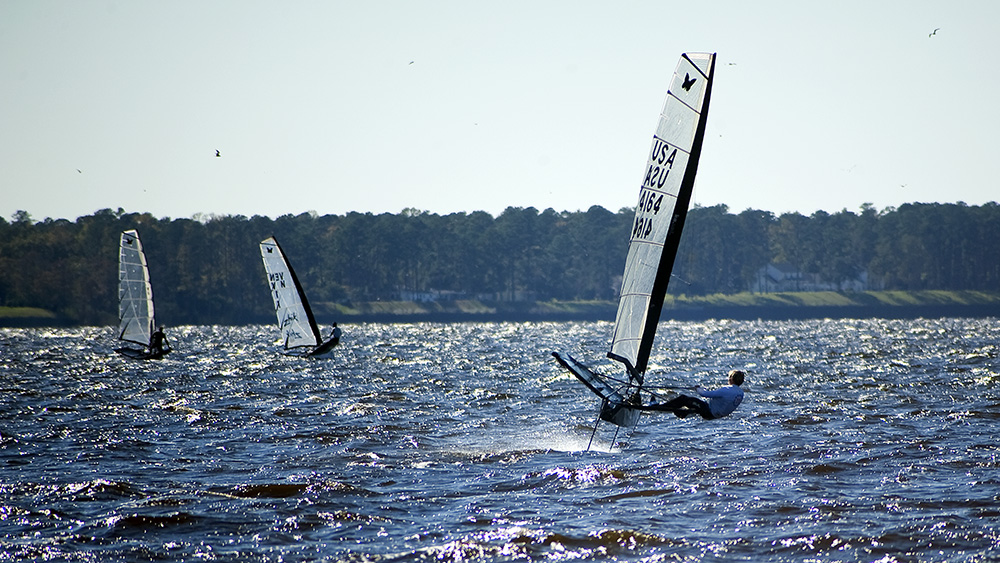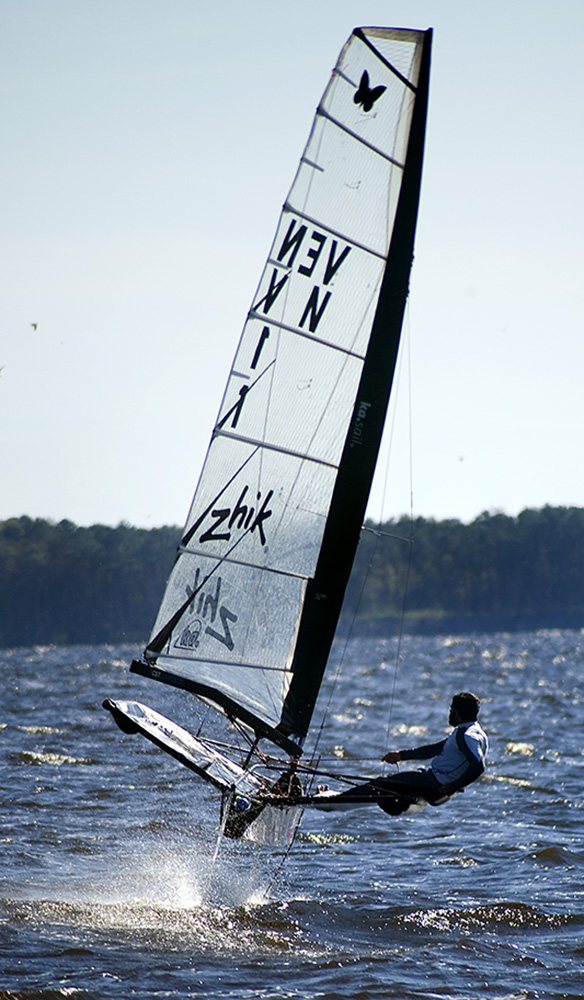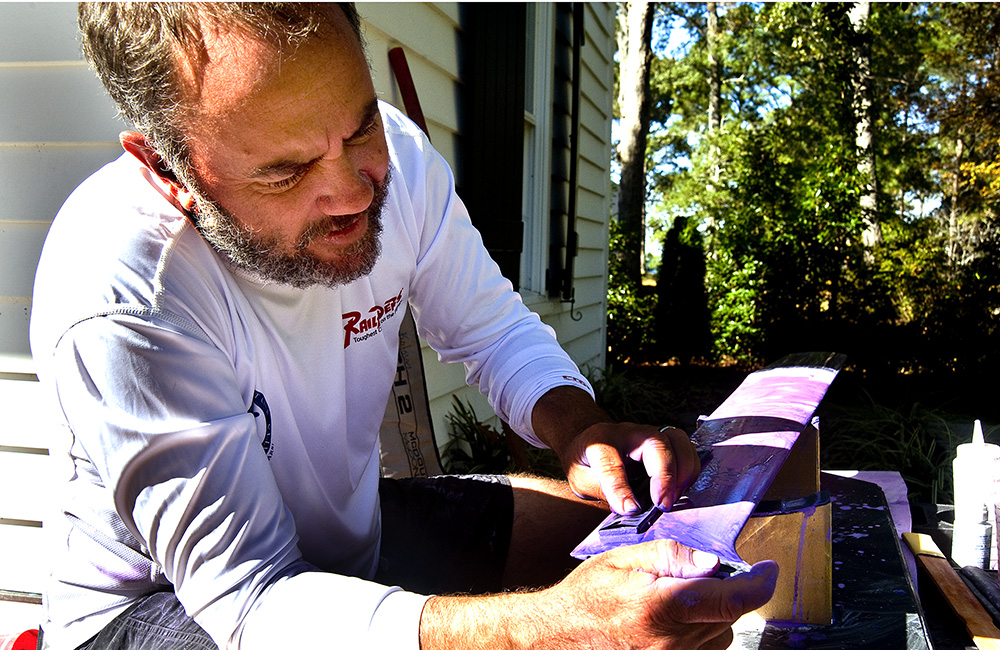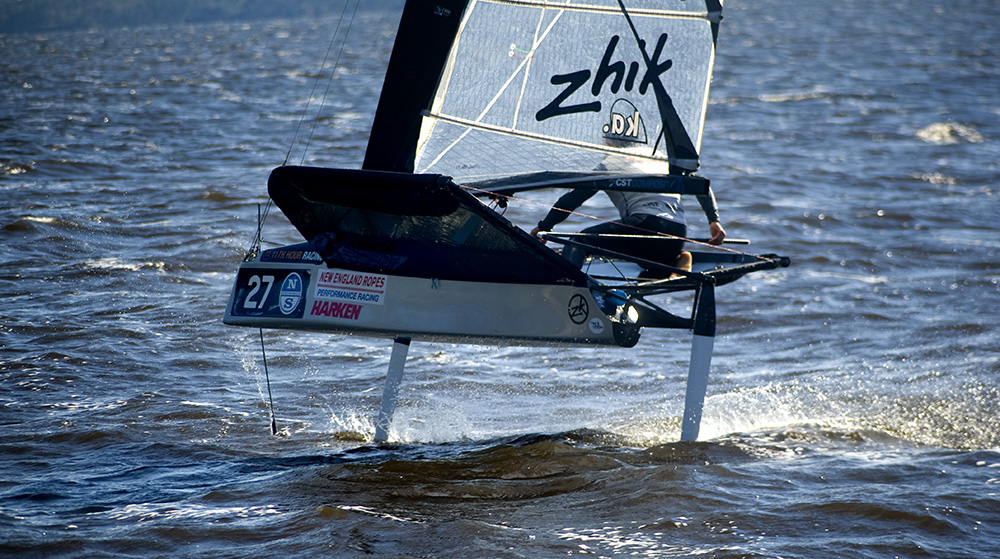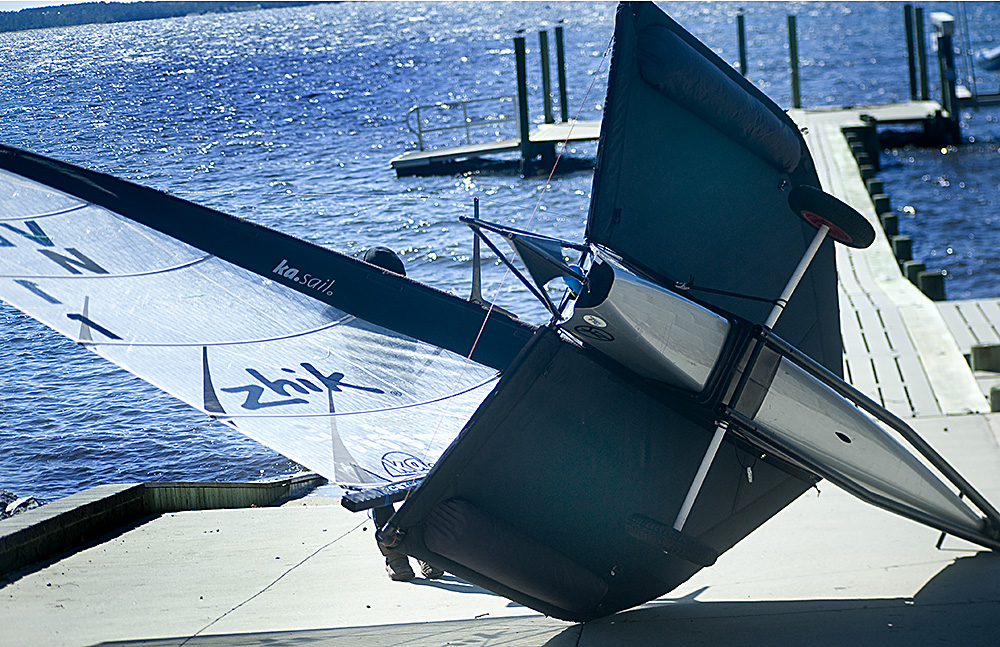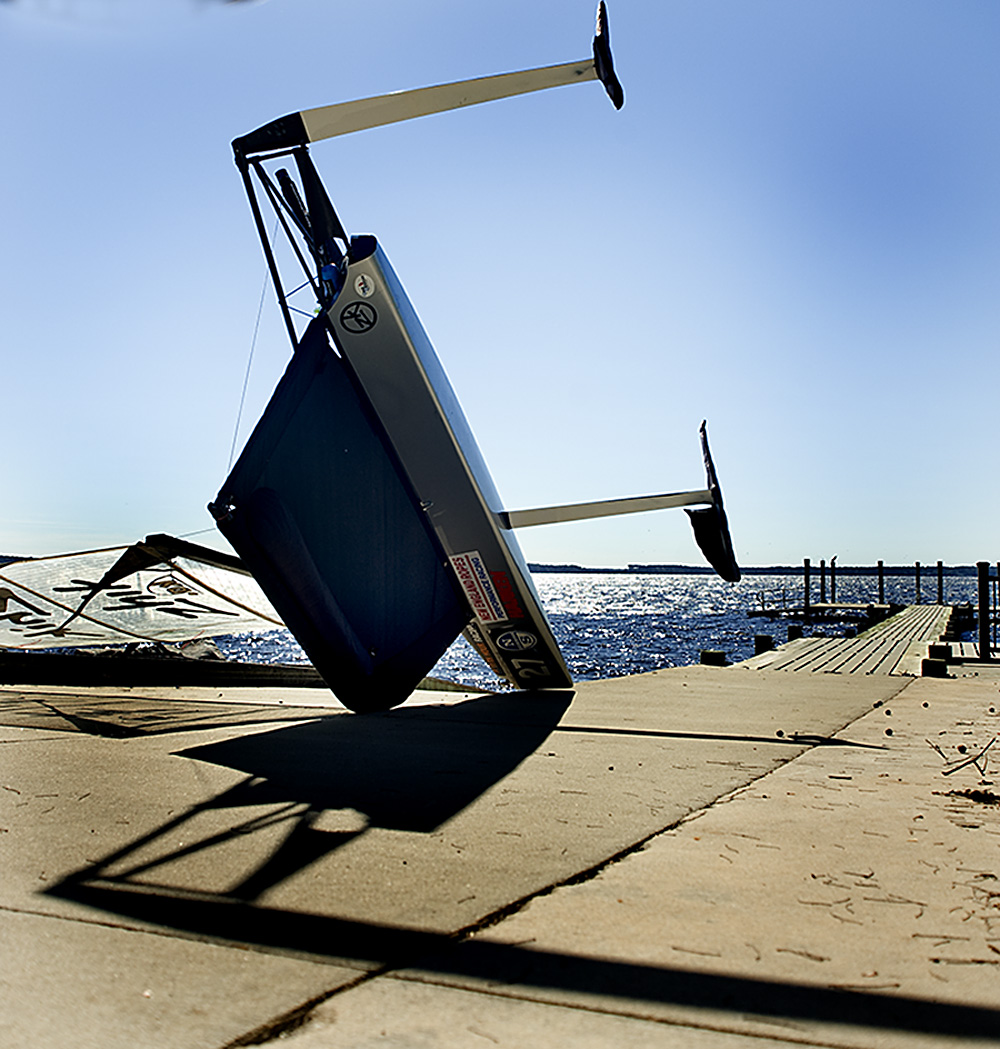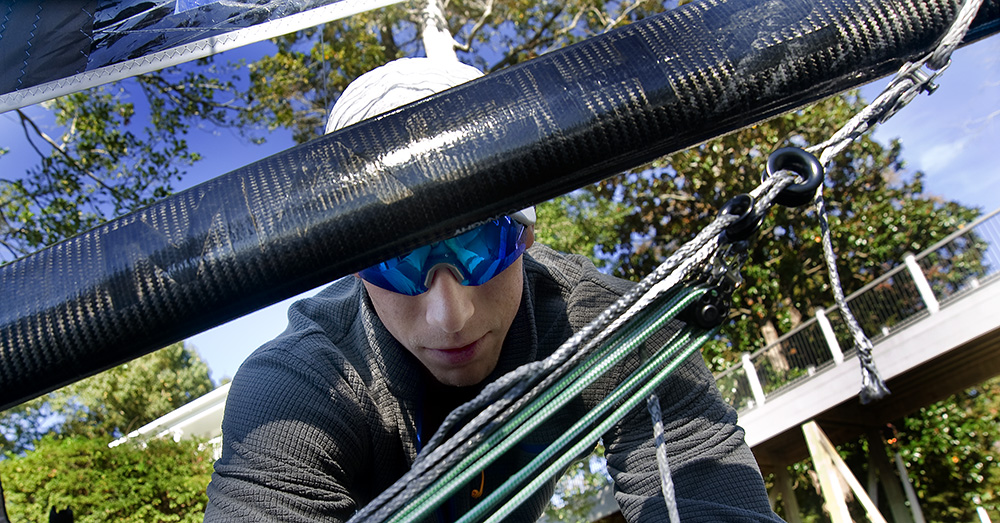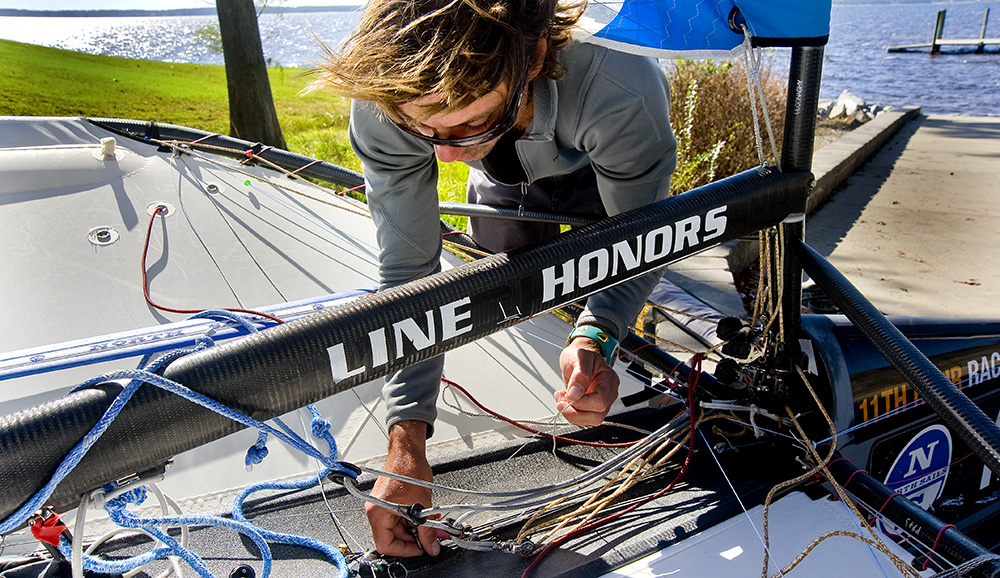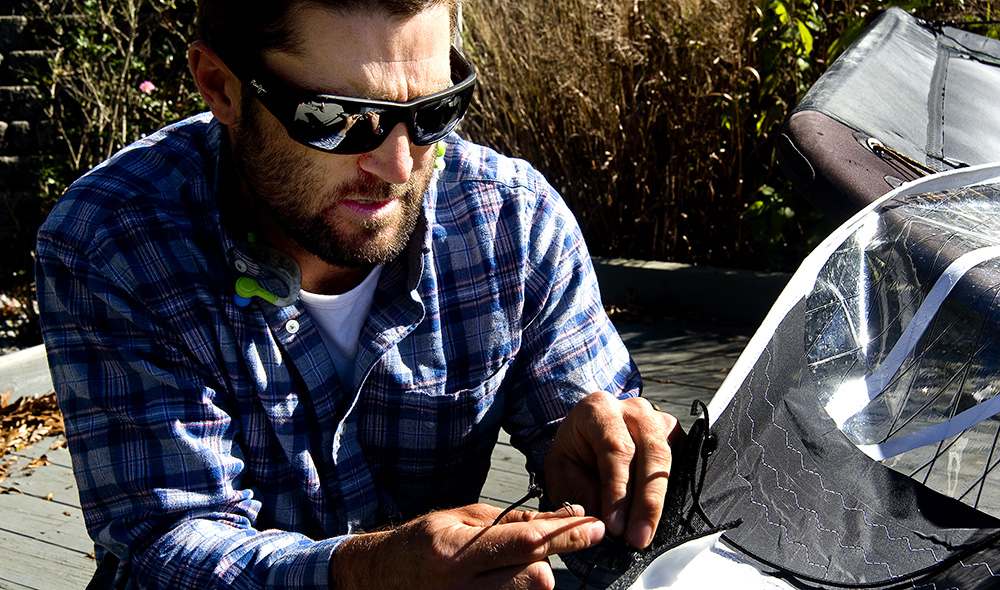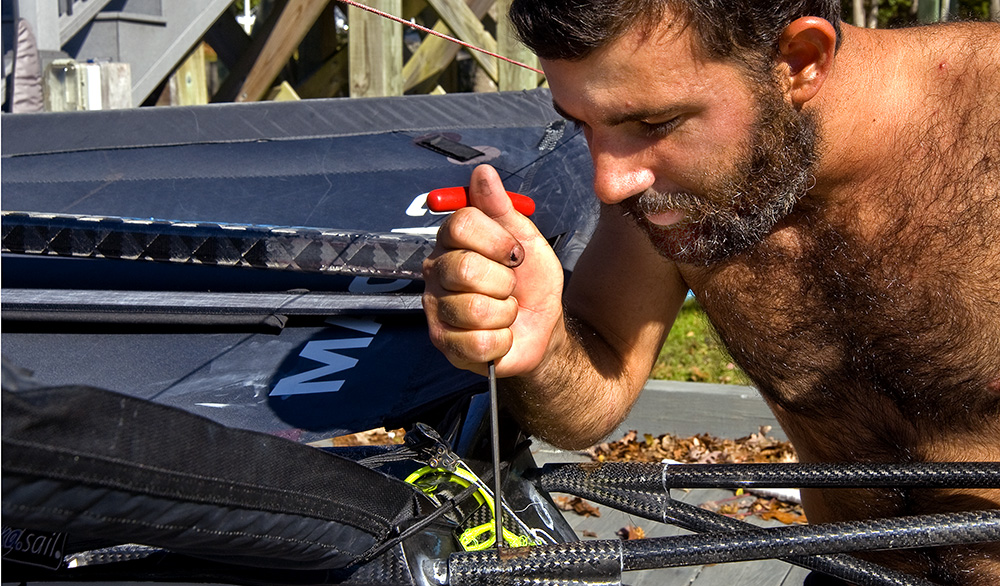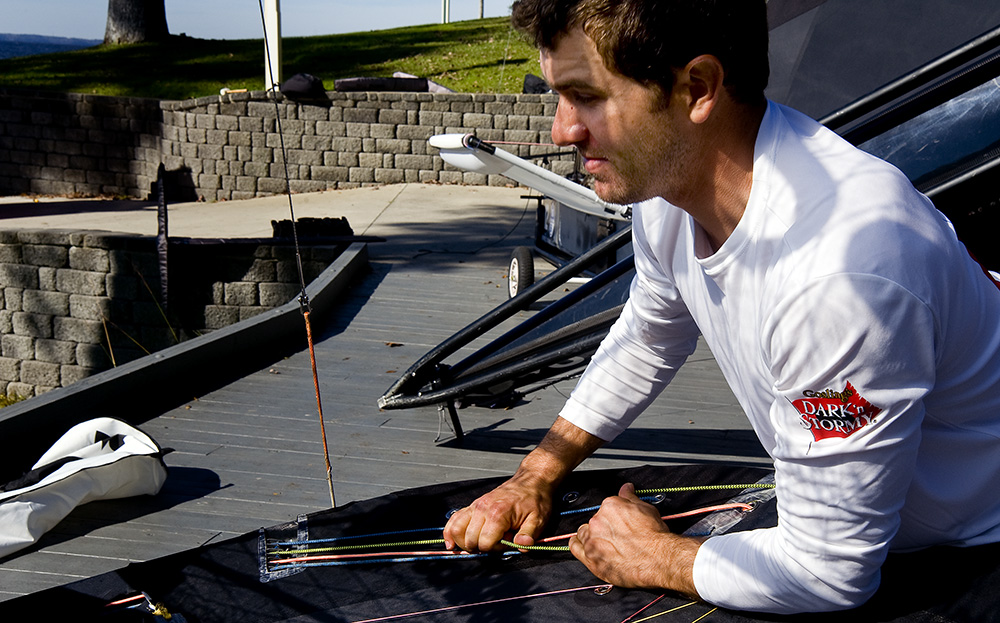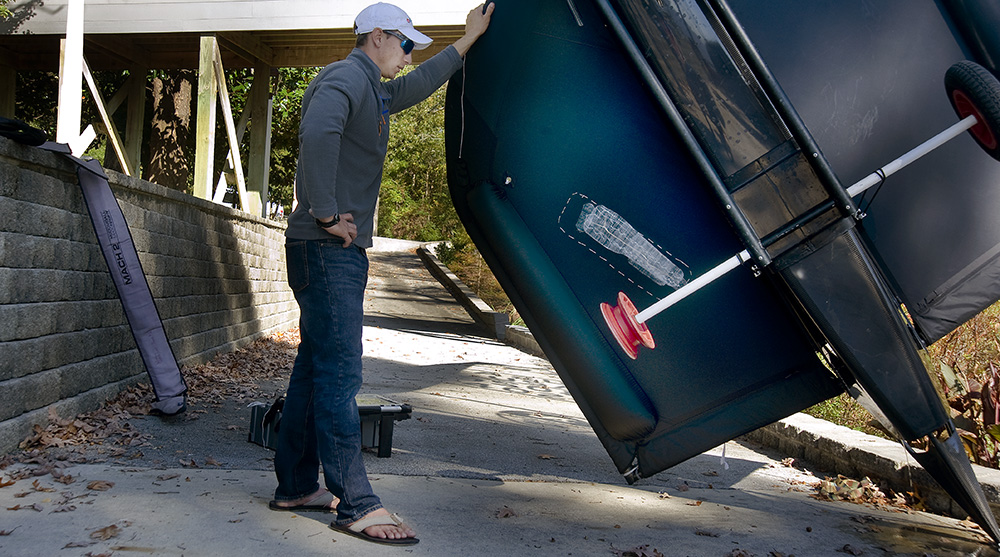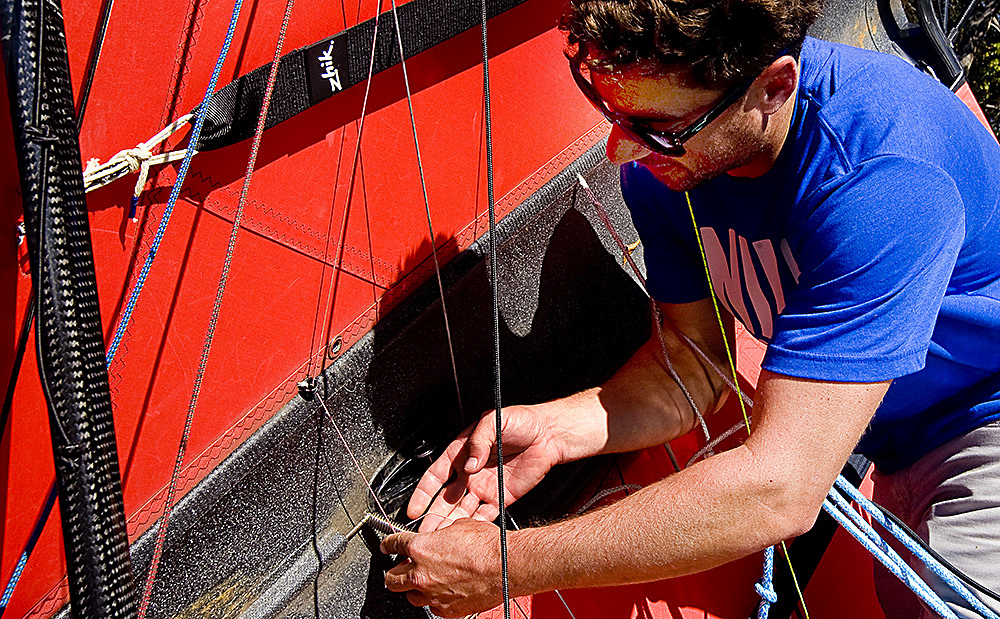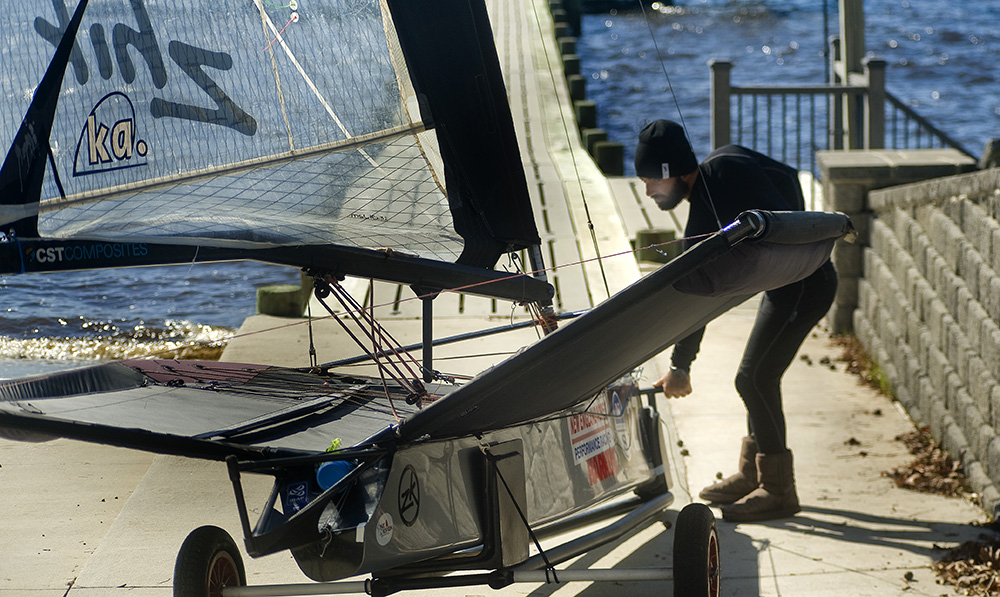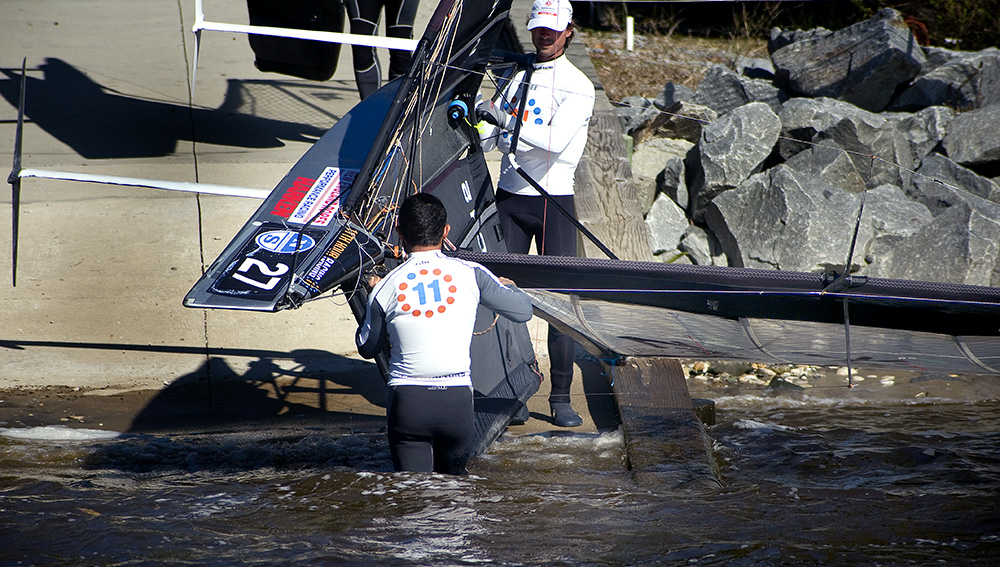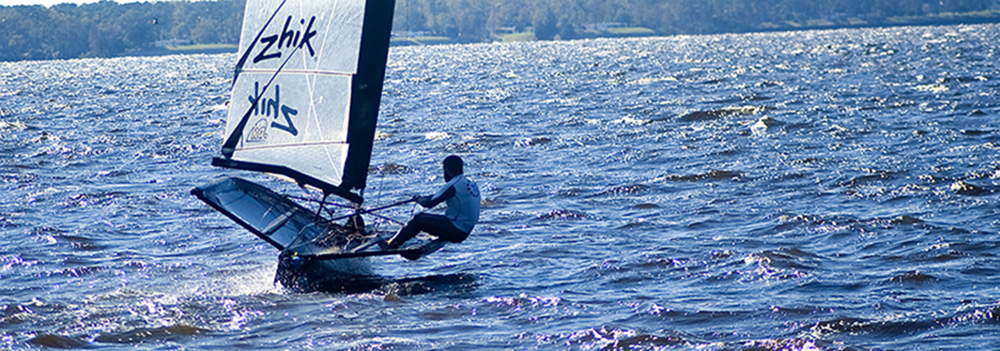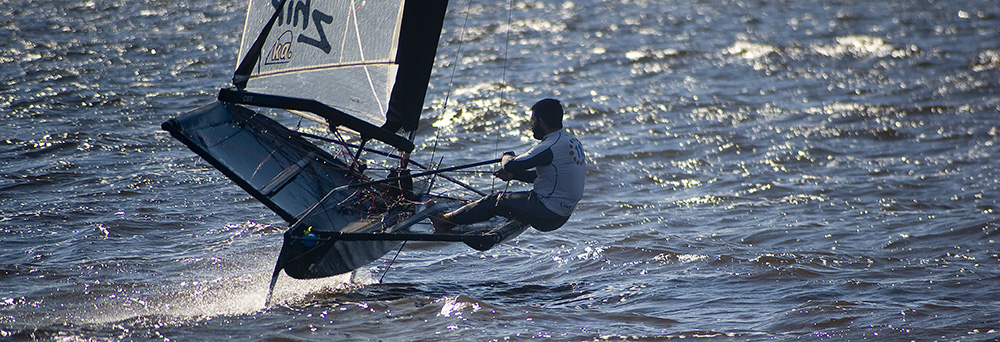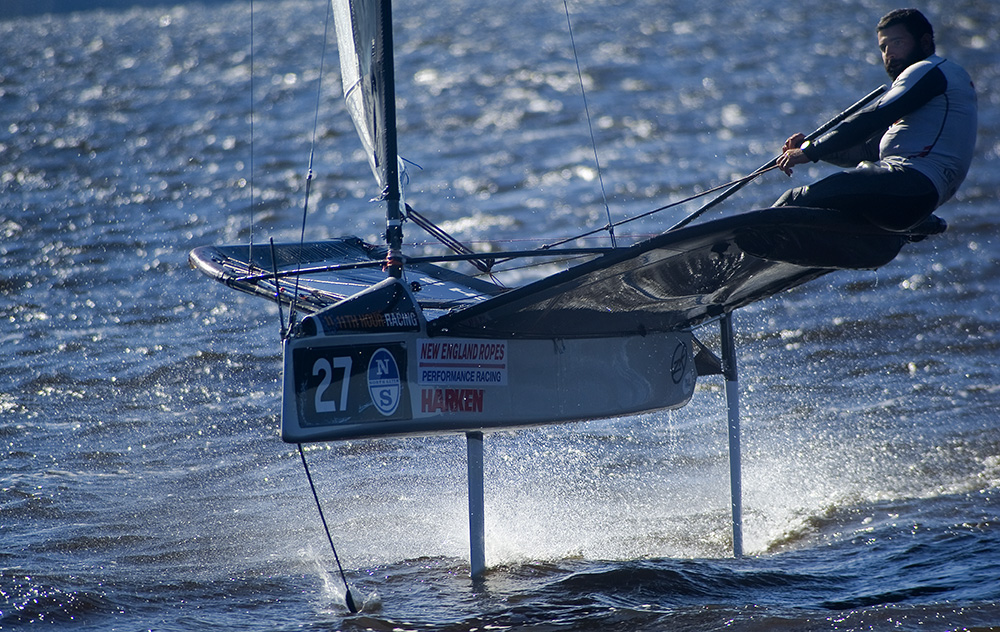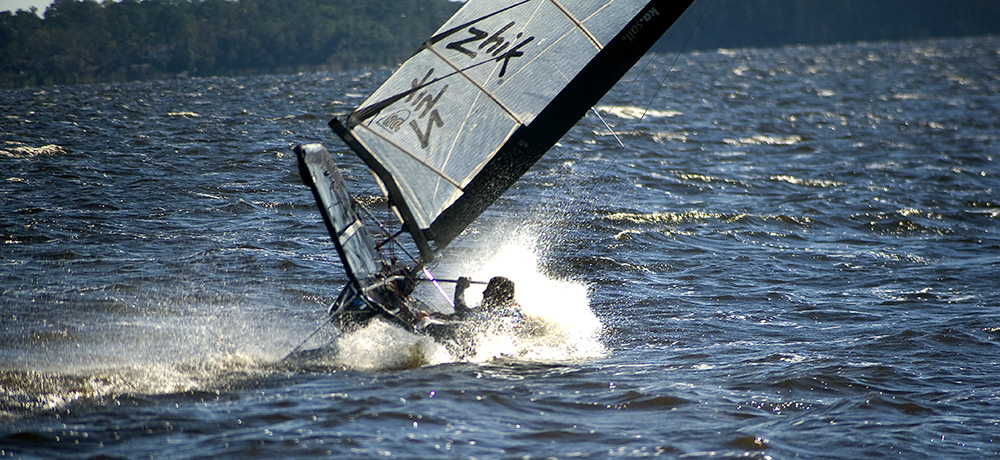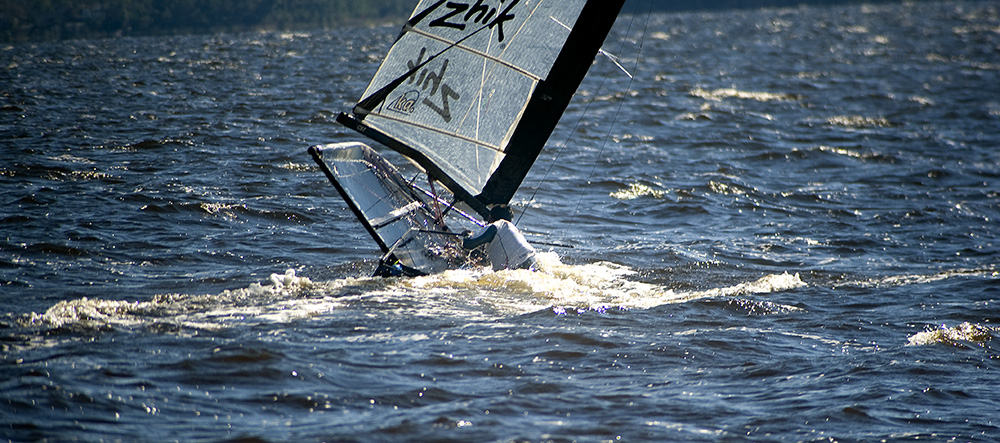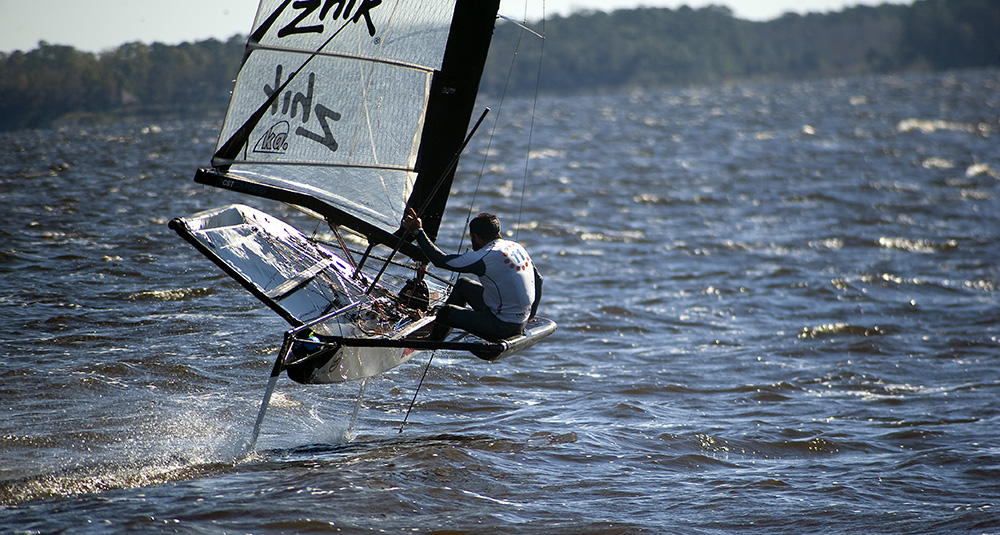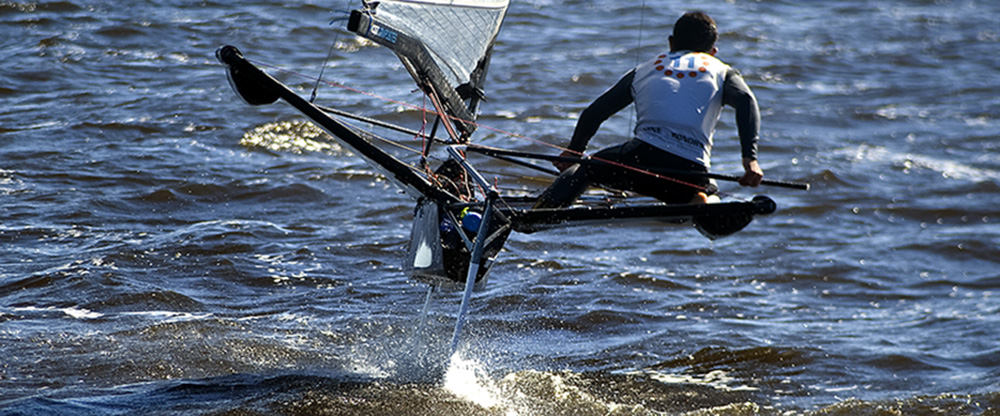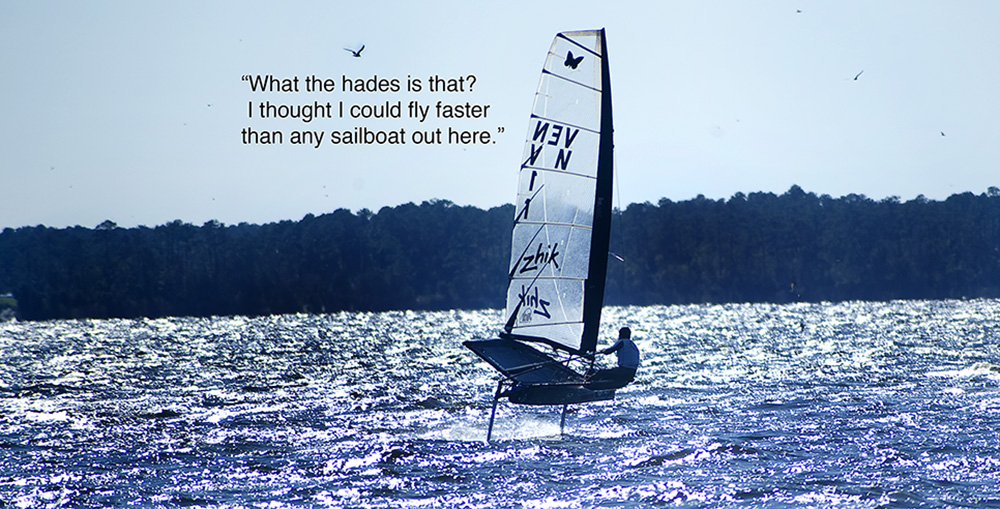It's Tuesday April 16, 2024
News From The Village Updated Almost Daily
November 23, 2015
Some sailors will tell you that if you want to go fast, you should get a power boat. That presumes that boats with sails are, by nature, pokey.But not all.
Consider the Moth.
A small boat capable of 30 knots, Moths fly above the water thanks to hydrofoils.Moths are the kind of boat that makes you look twice, their hulls held aloft by hydrofoil legs, high above the water that other boats ply.
In mid-November there was a chance to see Moths in action in Pamlico County waters. For a few days, just off of Steve Benjamin’s newly-opened Minnesott Beach Sailing Center, the Moths zipped along several feet above the Neuse River.
Steve knows about sailing a boat fast – in early November he’d placed 2nd in the World Etchells Championships in Hong Kong – but these Moths were faster still and he’d invited the Moth sailors to come here for a weekend Moth camp with an important mission. It would be their one last training and practice in advance of a December regatta in Bermuda where they’ll face sailors with Americas Cup experience.
The Neuse was perfect for practice this time of year says Anthony Kotoun, the US champion Moth boat sailor. That’s because the river has the same kinds of sailing conditions he and other Moth sailors expect to encounter in Bermuda.
Anthony Kotoun was busy with a sanding job on his Mach 2 Moth boat. It wasn’t the hull he was tending to but the Moth’s hydrofoils —those ‘legs’‘ that, as a Moth zips by, seem to stand on water like a heron’s.
With Moths, Koutoun explains, the hull is less important, speed-wise, than the surface of the hydrofoils. Those foils are the biggest difference between Moths and other boats with sails.
Anthony Kotoun takes sanding to a fine art. After a few moments of sanding, he applies a special dye that reveals areas that need more work before waxing, all to give a little more speed, not so much on the water, but above the water.“A Moth is a single handed mono hull with hydrofoils.” he says. In that they blur the line between sailing and flying,
Occasionally looking up from sanding his foils, Kotoun remarked, “To race Moth boats, you have to train your brain to think differently. You want your hull smooth and your foils smoother. It is not your hull that is in the water when you are racing along. Your foils are in the water.”
[page]
As modern as they may seem, Moths have been around since the late twenties, in one form or another. (Early on, there were no foils.) They started as wooden boats with rounded hulls. These designs were then transformed into a scow. Then the pancake emerged, flat and wide, and it’s since been modified to have super thin hulls only a foot across. The Moth has seemingly always been a boat in development.
Decades ago, came the big change that literally made some Moths stand out – the hydrofoil. Credit the Australians.
“Some crazy Australians decided to put some hydrofoils on these super thin hulls and they essentially got the boats to fly,” Kotoun says. The Australians got rid of the hull drag now that it wasn’t displacing water. All that is in the water is the hydrofoils which let the Moths quietly zip past just about anything, and perhaps a lot what’s in the sky above. Speeds of more than 30 knots have been recorded.
“Some Australians formed a business and manufactured 500 of these thin-hulled boats with hydrofoils.” says Kotoun. These boats became known as blade riders. “One guy with a blade rider won every single race he entered.”
That blade of a hull underwent even more changes says Kotoun. “They redesigned the blade riders into what we have now, the Mach 2 – basically version 2 of the blade rider.” says Kotoun. “The Mach 2 is now the industry standard and that is the Moth boat we all have here. It is a little longer than the blade rider and better.”
Kotoun notes, “What we have today is considered a developmental class. A developmental class allows every Moth boat to be different. The rules are what we call broad stroke rules, or what you could say are box rules.”
“The boat’s dimensions have to fit in a box.” says Kotoun. They have to be a certain length, width, and have a specified sail area. If your boat fits in those parameters, your boat is legit. “Individual sailors can push the technology envelope. All ideas are legal and welcome,” he says, “if you stay within the box.”
Underneath the wings of a Moth, resembling its namesake. if you looked at a moth’s body, with its outstretched wings and added a sail to it, you would have a Moth boat.Tranquility base, here. A Moth boat has landed on the dock at Minnesott Beach Sailing Center.Anthony Kotoun grew up in the Virgin Islands and now lives in Newport, Rhode Island. He first sailed when he was 13 and has been sailing professionally for 15 years.
He described the Moth campers who came to Minnesott as extremely good sailors. There was no rigid instruction, but instead, a line-up where the sailors start on cue and simply practice going as fast as they can.
This was the last chance for training for this group before their boats are shipped to Bermuda.
At the December invitational in Bermuda, the Americas Cup team will be competing. It qualified because it’s added the hydrofoil to propel their catamarans faster. “Yes,” Kotoun laughs, “the Americas Cup team is watching what we do.”
Next, meet some of the other Moth competitors who trained at Minnesott Beach Sailing Center for the December racing in Bermuda.
[page]
Matt Knowles is president of the American Moth Class Association. He was on a sailboat at age 3. Now 31, he has been a Moth sailor since 2009. He grew up in Newport, but now lives in Boston. He describes Moth boats as open sailing.
For Knowles, the allure of moth boating comes in the quiet ride at high speed. It’s where surfing becomes sailing.“Take other boats, like the Lasers. They have to be exactly the same. But our rules are open. You can engineer different things and try out different designs if you stay in the box. Whatever you develop in the box is legit.”
While some moth sailors build their own boats from scratch, most buy a manufactured boat and adapt it. For Knowles, the allure of moth boating comes in the quiet ride at high speed. “The sound is unique, this boat flies, not displacing water, but flying above it. There is so little drag. With a good wind, we can go 30 or more miles per hour. Even at that speed, all you hear is the wind. The only noise is wind in your ear. You feel light and agile. It’s a feeling you don’t get in other boats.”
Kotoun adds, “We have surprised many fishermen because they don’t hear us when we are approaching and then we just zip right past them. Power boaters just can’t believe when we slip up on them and go past them.”
“Sometimes we do that on purpose because we know they get a shock to see us fly by.”
“It’s not just that it’s a different technology. It’s a different form of sailing.One sailor new to the Moths is, Chris Museler, who is originally from Portsmouth, VA, and now lives in New York. “I’ve been sailing since I was a kid. I’m 41 now, the oldest guy here. I started Moth sailing in May of this year after I met a group doing it in Newport. All the best sailors in the world are now sailing Moths.”
“It makes you think about a lot of things other than just the where the wind is coming from.” says Museler, “It’s a good challenge for the brain.”
[page]
The weekend at Minnesott Beach Sailing Center was the last opportunity the Moth sailors would have to test what they’ve done to their boats, before the Moths go to Bermuda for the December regatta. Here are some observations by the Moth sailors while making adjustments before their first sail on the Neuse on Friday morning, November 13.
I am sailing this boat to beat myself, to overcome my lack of experience.The moth boat is the coolest boat ever.Re-doing line adjusters, it’s all in the magic that allows this thing to fly.Contemplating: is everything I do going to make it go faster?The boat has to be very changeable. If the conditions change, I want to be able to stay out there.[page]
Saturday, November 14, had a brisk fall morning, with the wet suits a welcome addition as the sailors suited up and made their way down the ramp. A brisk breeze blew over above water that was warmer than the air. After immersion in the water, the wetsuits would be like a cozy blanket as they challenged the winds of the Neuse.
No big trailers. Moths are walked down the ramp.As it is with any launch, at least the feet get wet, but launching a Moth boat is a whole body experience with the water.Launching a Moth boat requires a lot more work once the boat is in the water.Experience as an acrobat helps.Build a little speed.The hydrofoils make the boat fly. Indeed, trimming the hydrofoils is similar to adjusting the flaps on an airplane.[page]
It’s off to the races.When you fell of your first bicycle, or horse, what did everyone tell you to do?Get right back on, right then.Do not attempt this at home. This is for professionals only.
